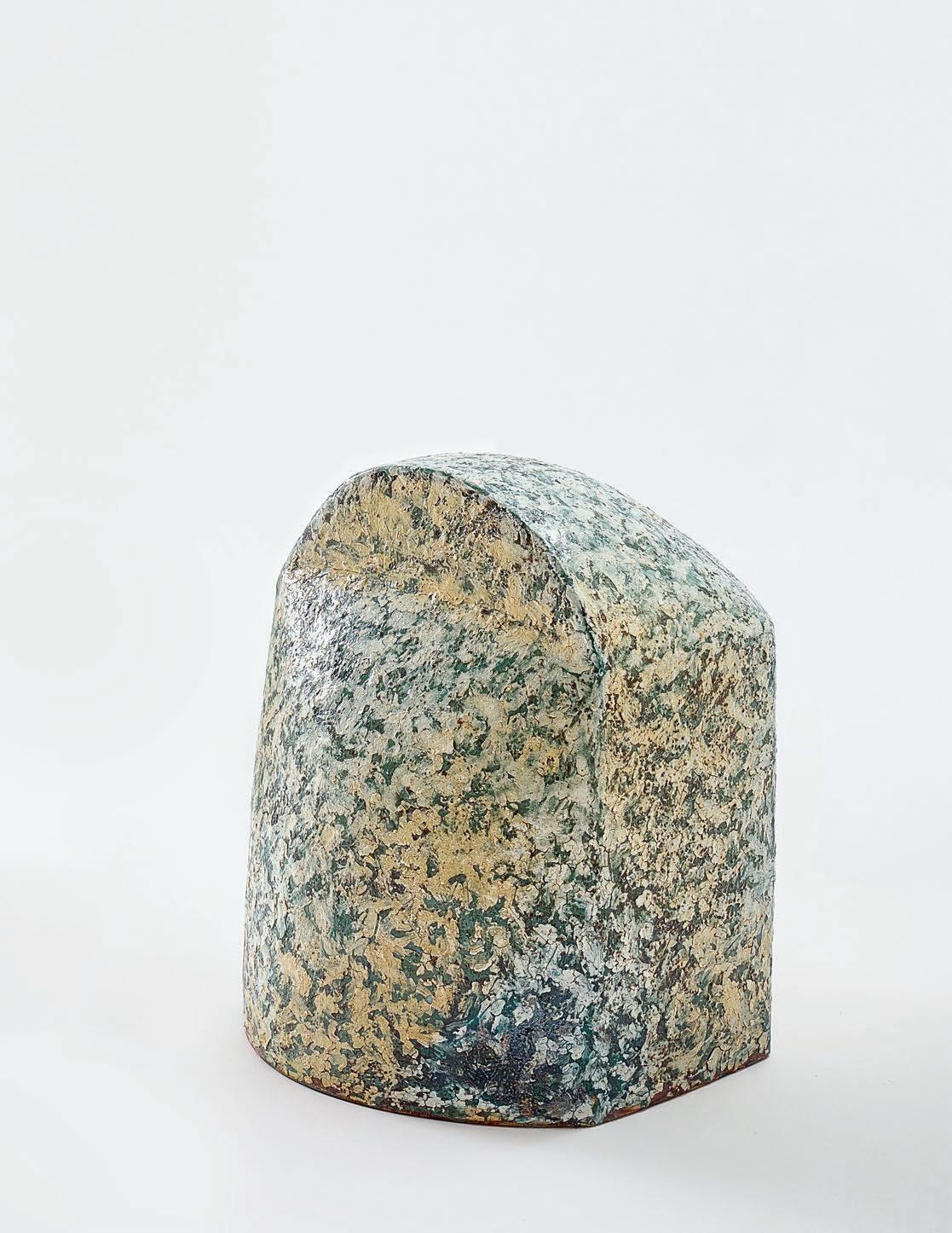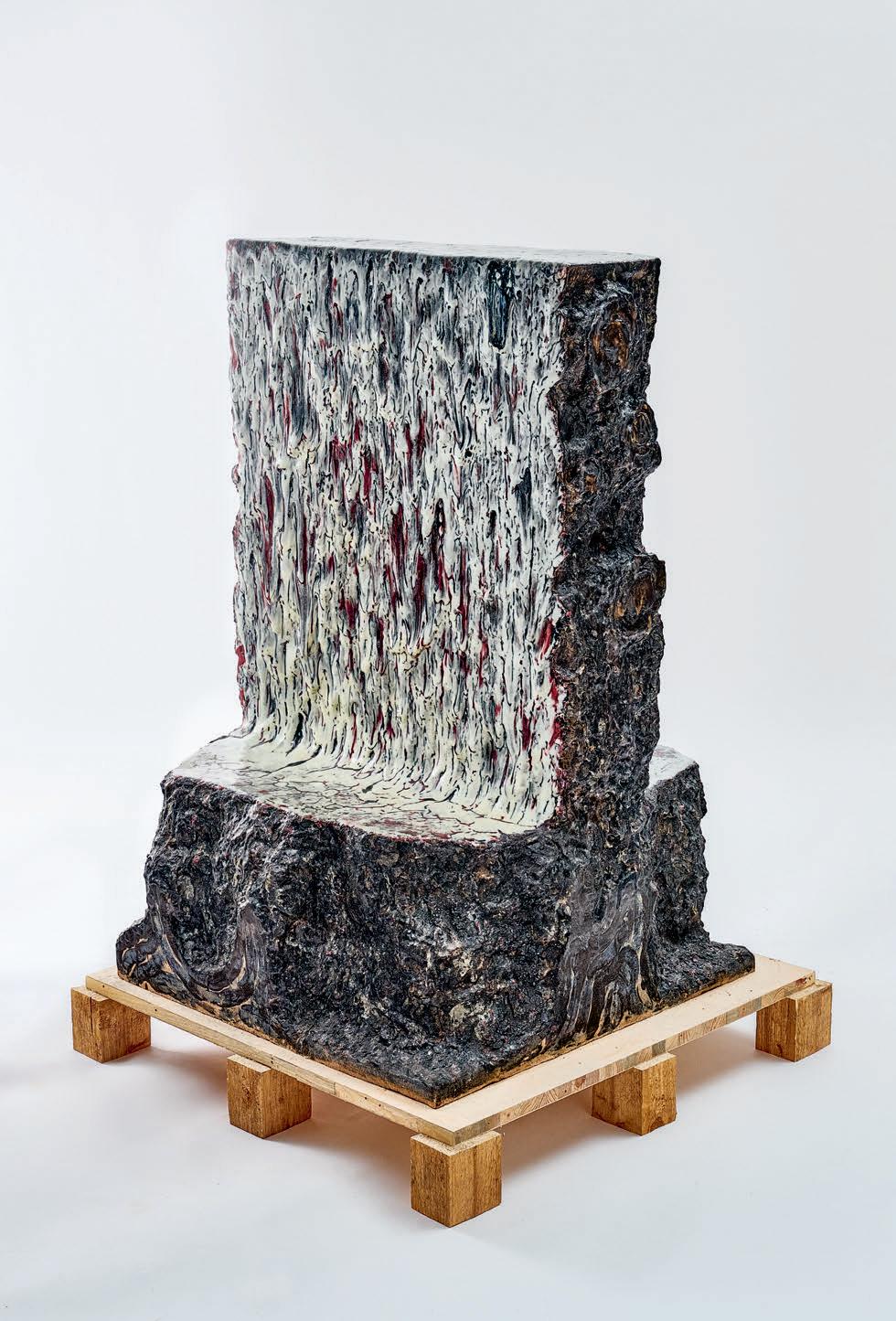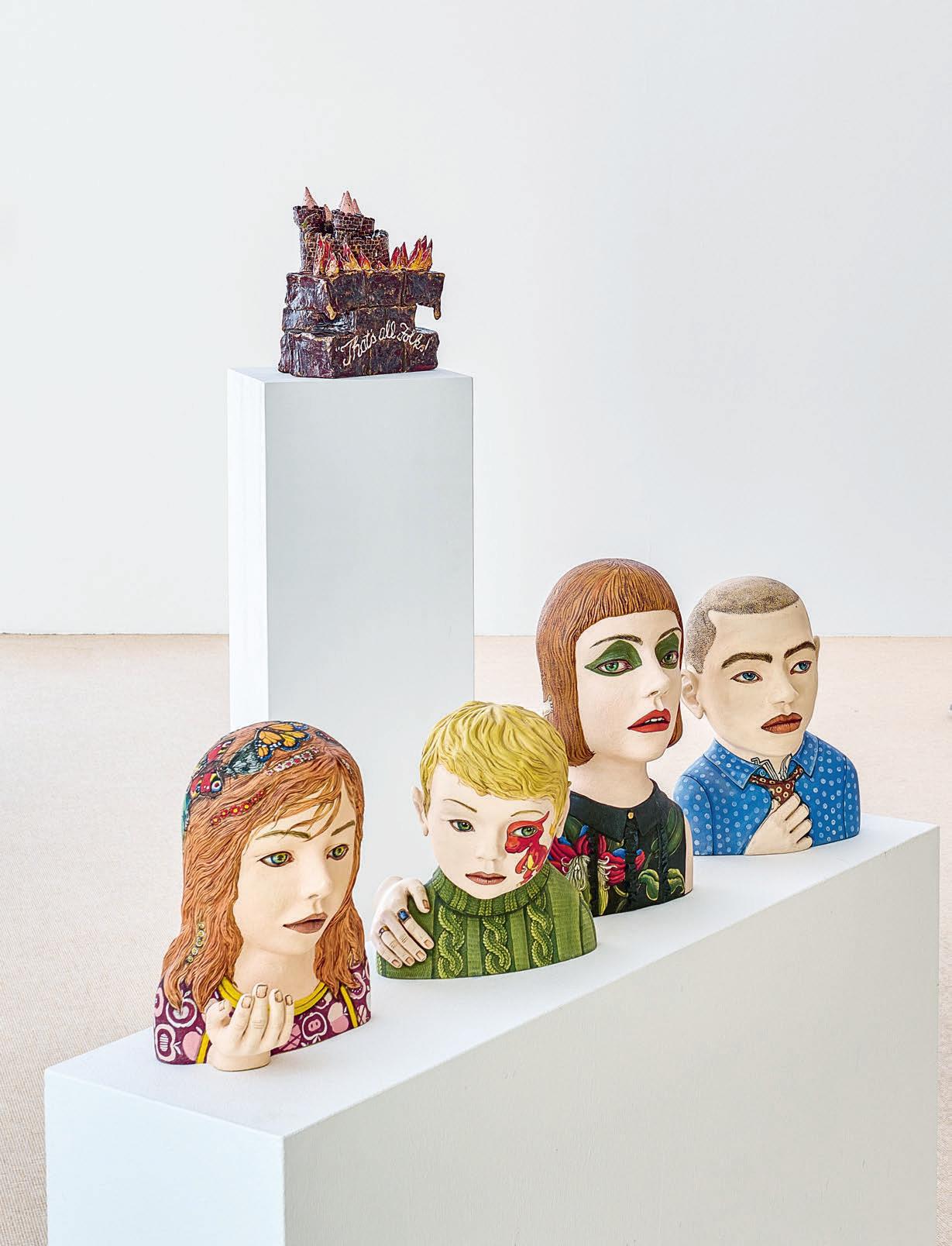




6
Grußwort vom Schirmherren des 15.Westerwaldpreises
7 Opening Remarks by the O cial Patron of the 15th Westerwald Prize
Prof. Dr. Jürgen Hardeck
8 Grußwort vom Landrat des Westerwaldkreises
9 Opening Remarks by Westerwald County Commissioner
Achim Schwickert
10
11
Grußwort des Stadtbürgermeisters von Höhr-Grenzhausen
Opening Remarks by Mayor of Höhr-Grenzhausen
Wolfgang Letschert
13 Jury des 15.Westerwaldpreises
15th Westerwald Prize Jury
20Jurybericht des 15.Westerwaldpreises
21 15th Westerwald Prize Jury’s Report
Dr. Nele van Wieringen
24Freie Keramik / Freeform Ceramics
26 1. PREIS / FIRST PRIZE Irina Razumovskaya
30
2. PREIS / SECOND PRIZE Nora Arrieta
36Ausgewählte Werke / Selected Works
94Salzbrand / Saltfired
Preis der Stadt Höhr-Grenzhausen / Prize of the Town of Höhr-Grenzhausen
Bodil Manz
100Ausgewählte Werke / Selected Works
110 Förderpreis / New Talent Prize
Beate Gatschelhofer
116 Ausgewählte Werke / Selected Works
134 Liste der Teilnehmenden / List of Participants

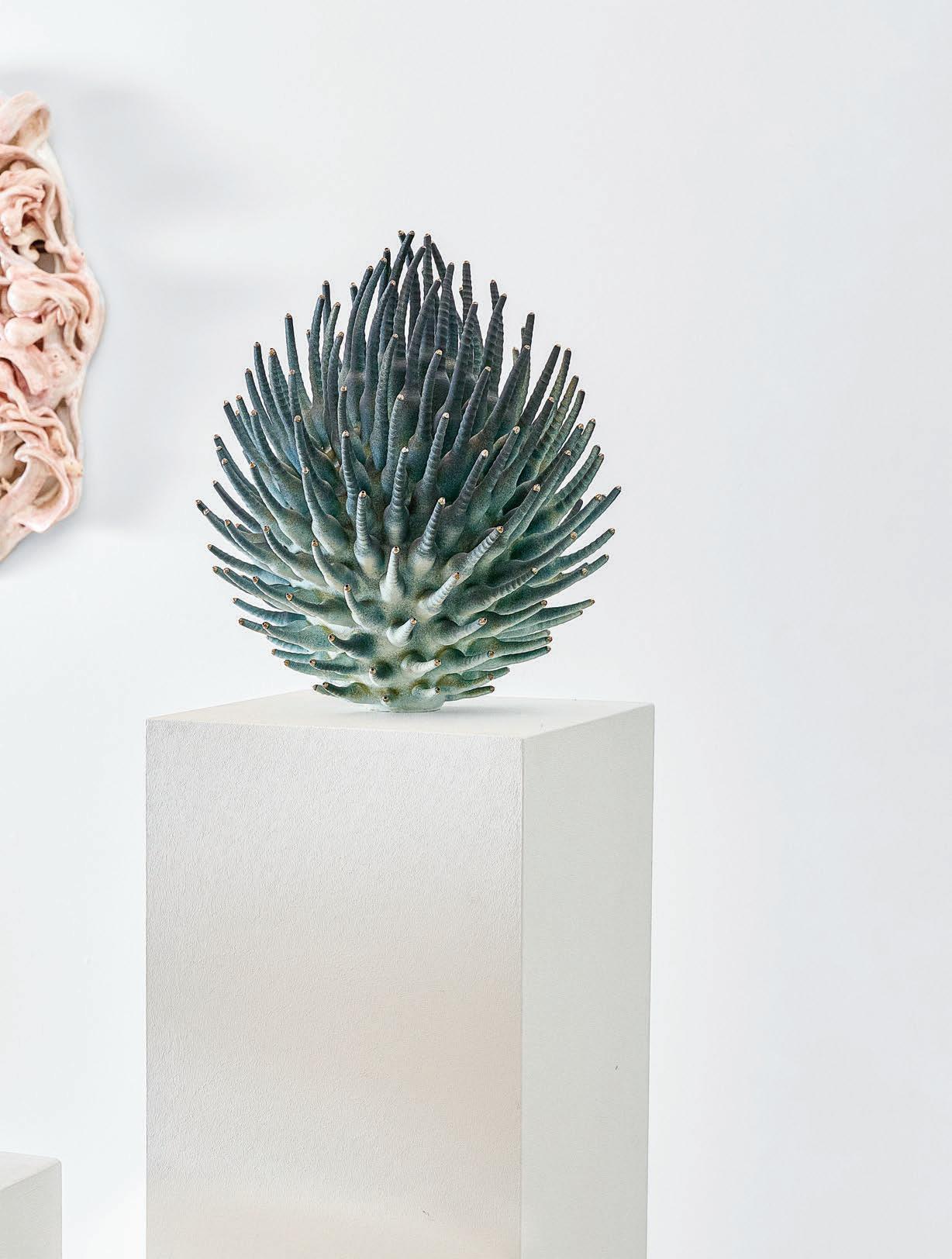
Überfluss und Überlastung sind zwei Schlagworte für Nora Arrietas Werk Toteninsel. Eine tätowierte Hand, eine gepiercte Zunge, mehrere Kinderroller, einige Schuhe, Gesichter und Handys ragen aus der dunklen Masse heraus, die den Kern der Skulptur bildet. Darauf steht eine Pferdefigur mit einem vergoldeten Sattel und einer Einhornmaske. Dies sind nur einige der Gegenstände, die in und aus diesem keramischen Füllhorn wimmeln. Dazwischen angebrachte Abziehbilder erinnern uns an die zentrale Funktion von Bildern in der heutigen digitalen Medienrealität. Überfluss steht sowohl für die Überproduktion von Waren in der heutigen Wegwerfgesellschaft als auch für den Bilderstrom in den sozialen Medien. Hier setzt die Überlastung an. Eine große grüne Schere, die im Begri ist, ein Mobiltelefon in zwei Hälften zu schneiden, symbolisiert den Wunsch, den ständigen Strom zu stoppen. Arrietas Skulptur fängt die Gegenwart eindrücklich ein und verweist gleichzeitig auf die Geschichte der Keramik. Ihre Form gleicht einer antiken Vase, ihre Opulenz erinnert an reich verzierte Meissener Vasen des 18.Jahrhunderts. Während die Meissener Gefäße hell und üppig sind, ist die von Arrieta dunkel und düster. Nur der Sockel ist mit grünen, knospenden Formen und Darstellungen von Pflanzen und Tieren gefüllt. Der Titel Toteninsel unterstreicht die Düsterheit und erinnert an Arnold Böcklins berühmtes gleichnamiges Gemälde von 1880. Sein dunkles und geheimnisvolles Gemälde wird oft als Allegorie des Todes interpretiert. Arrietas keramische Skulptur ist mehrdeutiger. Auch wenn es als eine Geschichte des Untergangs gedeutet werden kann, wird das Chaos mit Humor und einer großen Portion Verspieltheit dargestellt.
Abundance and overload are two bywords for Nora Arrieta’s work Toteninsel (Isle of the Dead)
A tattooed hand, a pierced tongue, several kid scooters, a few shoes, some faces and mobile phones protrude from the dark mass that forms the sculpture’s core. A horse figure with a gold-plated saddle and unicorn mask stands on top. Those are but a few of the items teeming in and out of this ceramic cornucopia. Decals applied in between remind us of the central function of images in today’s digital media reality. Abundance signifies both the overproduction of goods in today’s throwaway society and the stream of images in social media. This is where overload comes in. A large pair of green scissors about to cut a mobile phone in half symbolizes the desire to stop the perpetual flow.
Arrieta’s sculpture captures the present compellingly, while evoking the history of ceramics. Its shape resembles a classical vase, its opulence reminiscent of richly decorated 18th-century Meissen vases. Whereas Meissen vases are bright and exuberant, Arrieta’s is dark and gloomy. Only the base is filled with green budding forms and images of plants and animals. The title Toteninsel (Isle of the Dead) underscores the gloom, bringing to mind Arnold Böcklin’s famous eponymous painting of 1880. His dark and mysterious painting is often interpreted as an allegory of death. Arrieta’s ceramic sculpture is more ambiguous. Although it can be interpreted as a tale of doom, its chaos is rendered with humor and a large dose of playfulness.
Dr. Jorunn Veiteberg
NORA ARRIETA 2024, Toteninsel, 86 × 75 × 75 cm
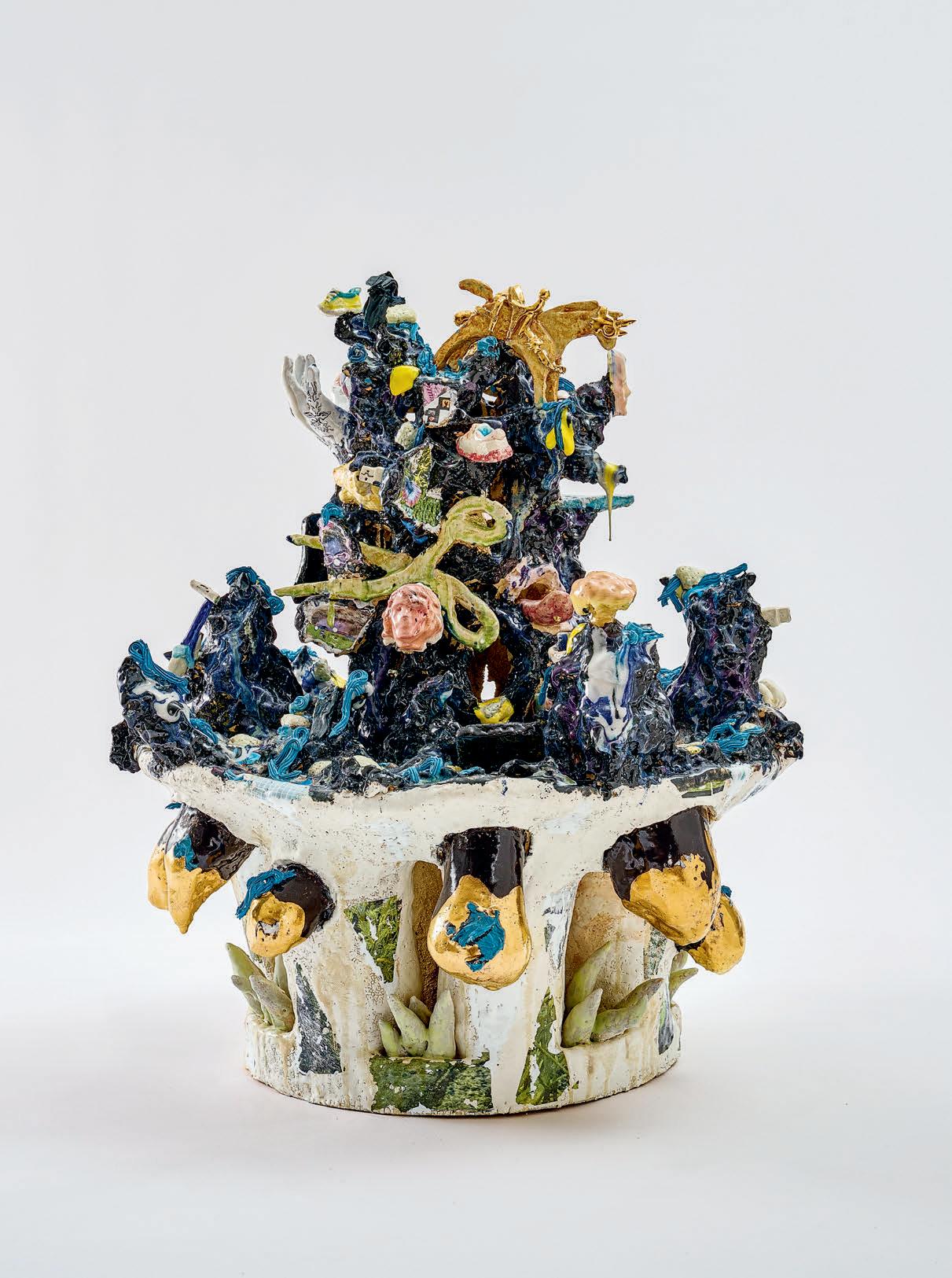


SARA JEFFRIES 2023, Imagined Architecture #6, 28×20× 30 cm
NADEZHDA KATAEVA
2023, Endlessness, 34 × 41 × 29 cm

LJUBICA KNEŽEVIĆ
2023, Attempt at meditation in the age of the Anthropocene, je / each Ø 35 cm

NUALA O’DONOVAN
2020, Teasel – Enclosing Eden, 28×28× 45 cm




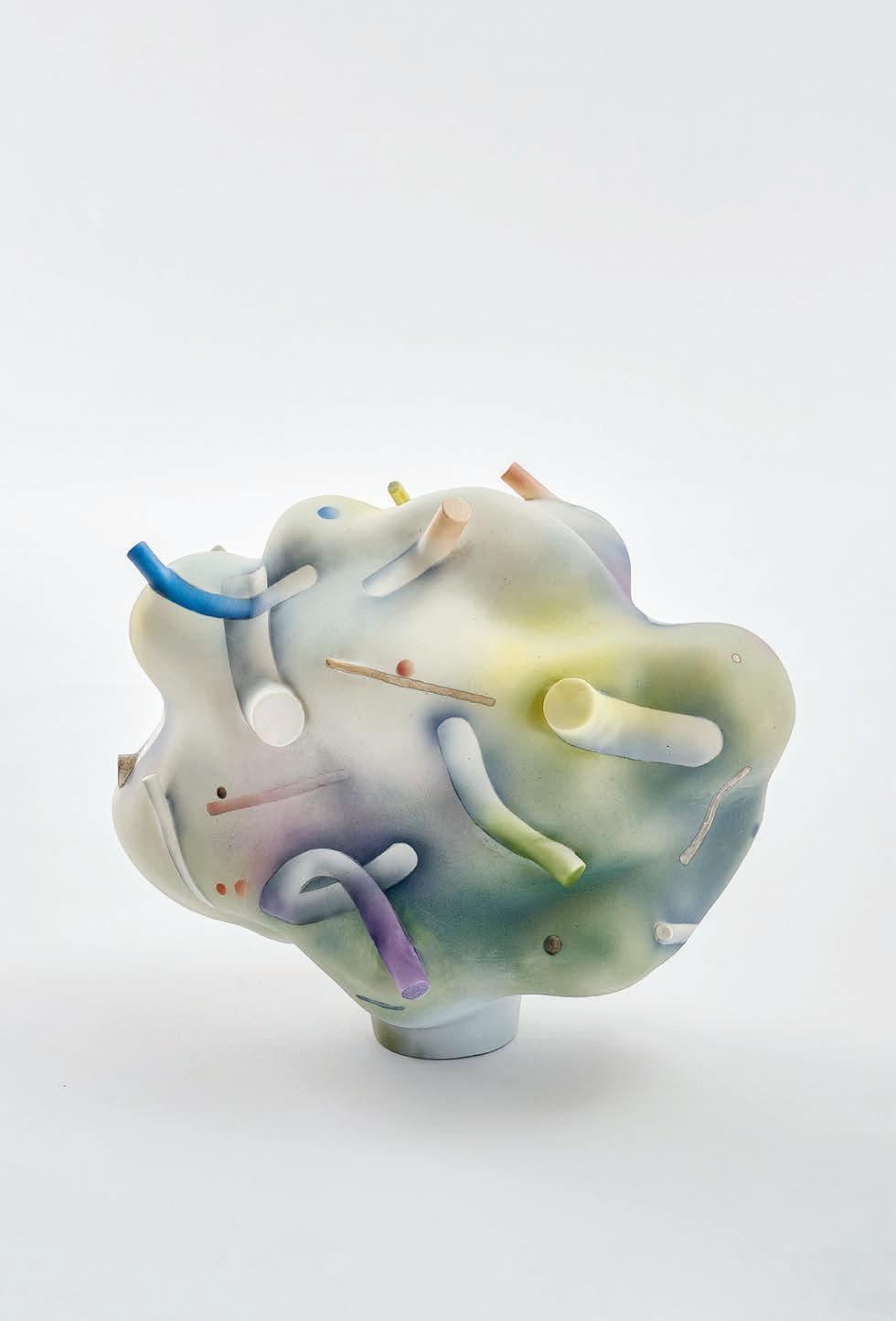
2023, Floating objects, 34 × 40 × 23 cm
2024,

